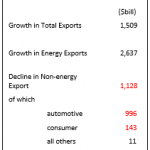Emerging markets comprise a scatterplot of disparate economies, drawn from every quarter of the globe, and exhibiting an extremely diverse range of shapes, sizes, political regimes, trade composition and financial circumstances. Included in the mix are some of the largest economies in the world, such as China, and also India and Brazil, which match France and Italy, respectively, for size.1 Also represented are some of the smallest economies such as Chile, Hungary, and the Czech Republic which, while still larger than, say, New Zealand, are only around 1% the size of the United States.2
The global emerging market equity indices and the global emerging market debt indices both contain around 20 countries—although with a degree of membership mismatch—and the currency market opportunity set is broader yet again. With such a large and colorful population of often tiny markets, it’s little wonder that the emerging market universe is a reliable ongoing kaleidoscope of success stories, investor grief, and eyebrow-raising headlines.

Before exploring the present discomfiture of emerging markets, it’s worth recapping the stylized investment case which supports them. Key planks in that case include:
So, what’s going wrong right now?











Leave A Comment